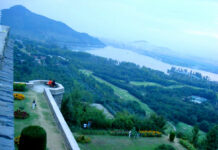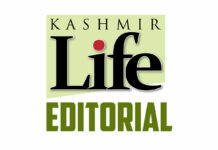Though more than 70 per cent of the gazetted cadre in Jammu and Kashmir’s administration is from a rural background and aware of the issues that confront life in the countryside, still Governor Satya Pal Malik’s Back to Village programme is a good beginning of an outreach. This will not only help the officers to revive their memories, part of which might have faded in the urban official life, but the idea will also offer an idea about what an unelected government’s outreach looks like. The officers will spend two days talking to people and invariably a night in the villages.
With an apparent focus on the functioning of the money-rich Panchayat sector of governance, the plan is to understand the basic needs that the different belt might have and to interact with the Panchs and Sarpanchs who were elected last fall. More than 4500 officers who were deputed to 4483 Panchayats hold a clear brief about what they are supposed to do. It was revealed earlier by state’s Chief Secretary BVR Subramanyam who said the programme is aimed at four main goals: energising panchayats, collecting feedback on the delivery of government schemes and programmes, capturing specific economic potential, and undertaking an assessment of the needs of villages.
The officers will interact with the people during the weeklong programme and return with the suggestions. These inputs would be tabulated and will help the policymakers to evolve the developmental strategy for the state periphery.
Jammu and Kashmir continue to be an agrarian economy and more than two-thirds of the state lives in villages. Owing to the situation that the state is passing through for more than three decades now, the periphery of Kashmir and parts of Jammu has remained the most pathetic story of survival and struggle. The security situation has created its own problems and some of the issues that the state faces at the urban planning level are basically the outcome of that. This is something that the designers of the Back to Village scheme have apparently missed while they conceived and went public with a huge media blitzkrieg. Part of the crisis that the state’s developmental narrative faces in Jammu and Kashmir owe much to the security situation than the routine corruption, which is otherwise part of the state’s DNA.
Since the officers are going to the villages, why is their brief limited? Why cannot they go with a detailed questionnaire that helps policymakers understand the key human development parameters and the impact of the conflict? Why should not a good policymaker need to know that how one Panchayat has more per-thousands government jobs available than the other Panchayat? Why does not a governing officer ponder to why one village has larger graveyards than the one, less than half a kilometre away? Why does not an administration attempt to see how a village declared backward 50 years ago is far more forward than most of the city localities? How can an officer in the social welfare set up not require knowing the comparative destitution between two blocks he is supposed to administer? What is the harm in creating diverse parameters about crimes, literacy and poverty status?
In villages, information about these things is literally in the air and an officer’s visit would reveal tons of information about the key areas that could eventually strengthen the developmental narrative.
Despite this deficit, the scheme is a good start. Let the talking begin. There is always the next time for helping the talk to walk.










